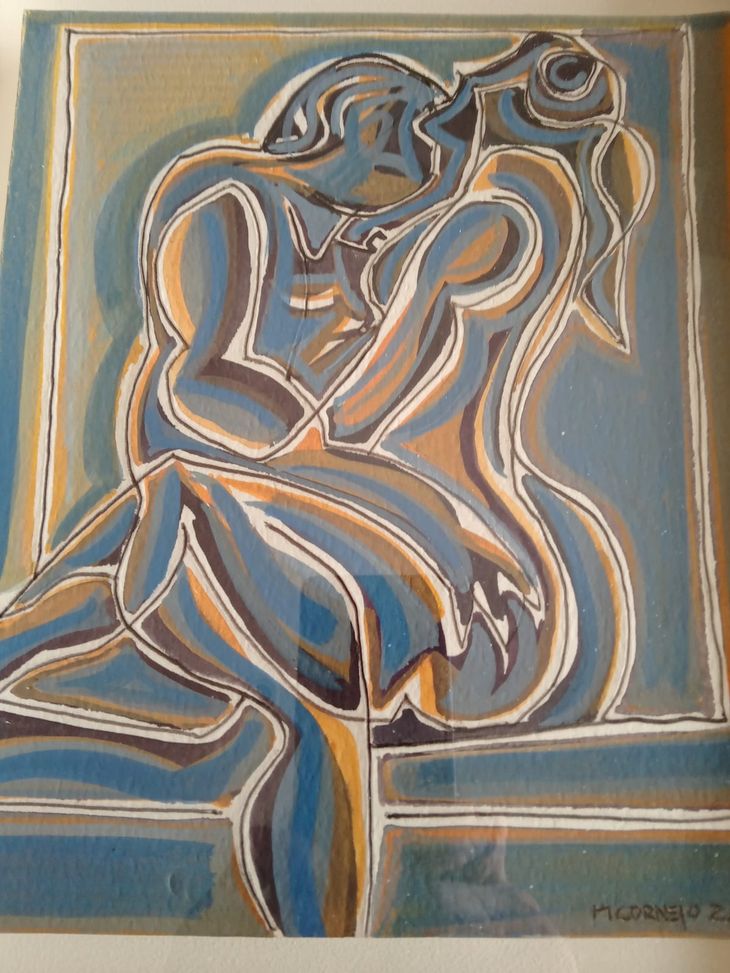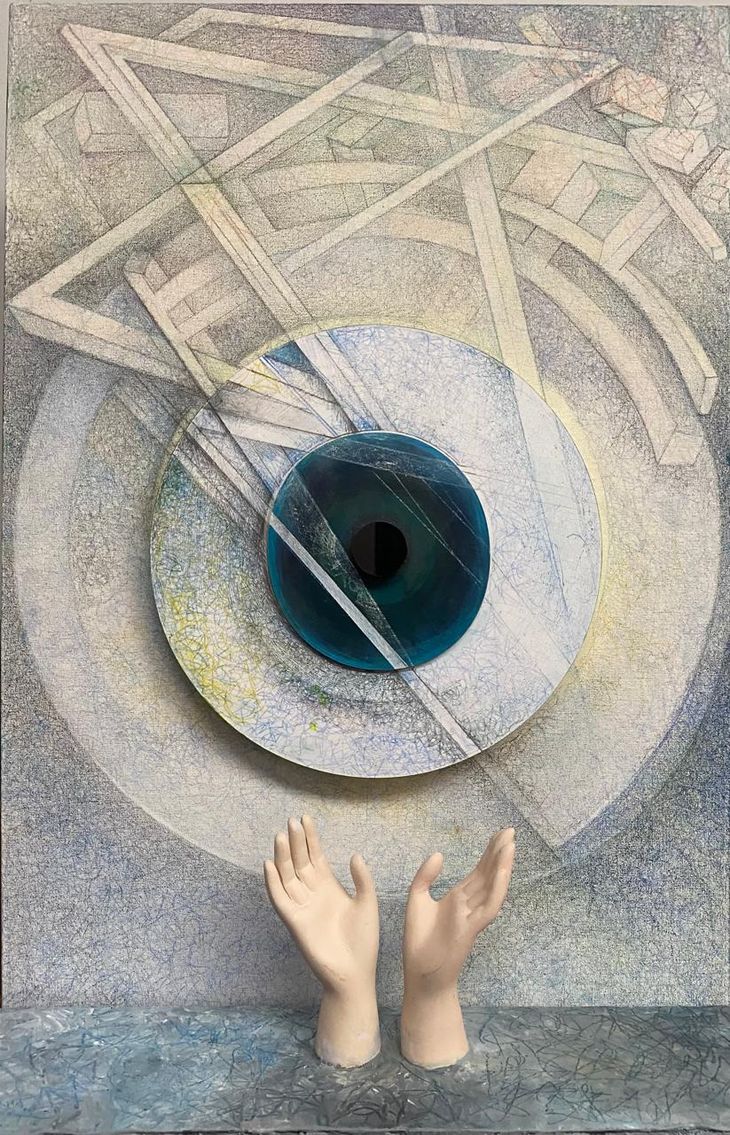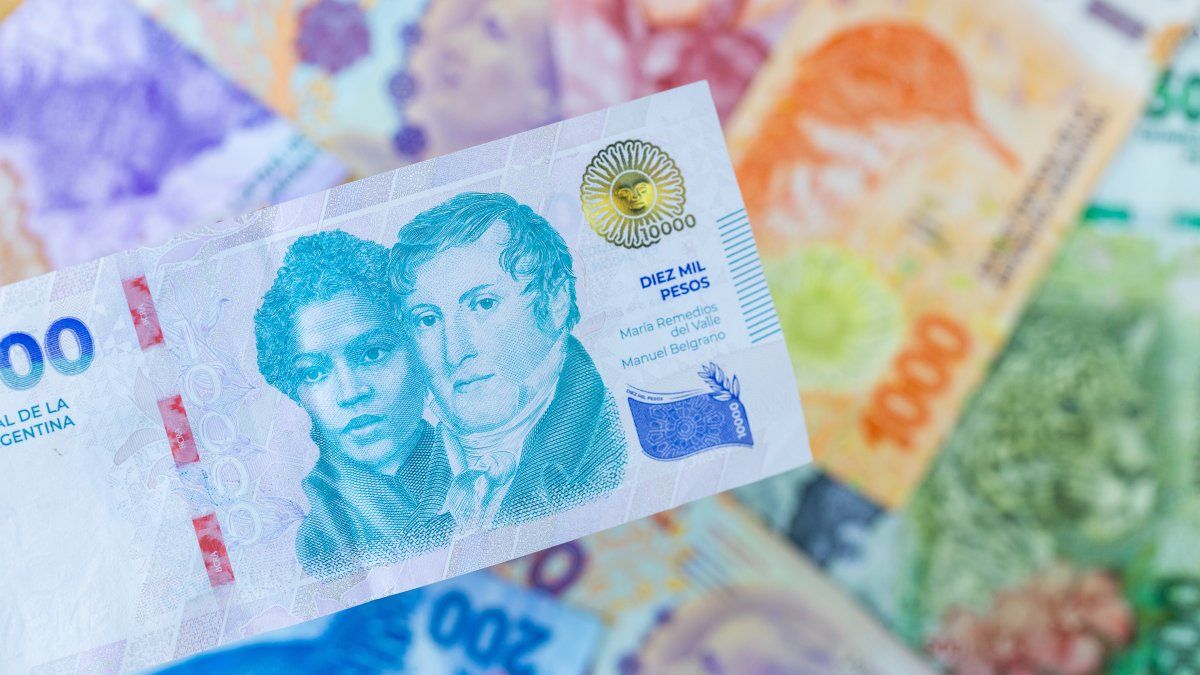Salta — Matias Bassanidirector of the BAC gallery of Saltainvited this newspaper to the inauguration of its new headquarters and called on the artists Gabriela Aberastury, Lucrecia Orloff, Marcelo Catarinolo and Mariano Cornejowho also acts as curator and author of the text that accompanies the exhibition, to integrate “The burning flame of love”a set of works carried out around eroticism in painting.
The term eroticism comes from the Greek éros, which designates passionate love together with sexual desire, sensuality, romantic love, which is found in painting, sculpture, photography, theatre, cinema, music, and literature.
Honoré de Balzac He said that “Eroticism depends not only on the social morality of the individual but also on the culture and the era in which he resides”In the Encyclopedia of 1775 it is stated that “The erotic is an epithet that is applied to everything that has to do with the love of the sexes, it is used to characterize something different, an excess”.
There are hundreds of definitions of eroticism, whose adjective erotic is distinguished from love, a feeling, while erotic affection is derived in part from the body and sexual impulses. Eroticism has served as a source for many artistic representations: Paleolithic paintings, explicit scenes in Mesopotamia, in Eastern cultures, in the Moche culture of Peru. The relationship between art and sexuality has had, since time immemorial, a long relationship.
In religions it is always present, in Catholicism the mystical texts of John of the Cross, “The Dwellings” of Teresa of Jesussacred prostitution among the Phoenicians and Mesopotamians that reached Classical Greece, Roman lust, pornography among the Greeks and the Vestals who flaunted chastity. The oriental aspect cannot be ignored in the Kama Sutra or the sexual images of the temples, for example, Khajuraho.
Already in the Renaissance, the tradition was to produce erotic art for the amusement of aristocrats. In France there was what was called “the gallant painting” during the Rococo period. In the 18th century there was a time when the works of Watteau and Fragonard They were classified as indecent because they showed the important role of nudity.
The scandal caused by this must be remembered. Manet with his “Leave the grass behind” from 1862 and its famous “Olympia” 1863. During the time of the Impressionists, the social and sexual panorama underwent great changes, female sexuality was avant-garde
Nudity in visual representations has been constant in all cultures and we can point out some theoretical itineraries to approach eroticism, such as the case of Sigmund Freudwe are already in the 20th century, who in “The malaise of culture” developed the repression of moral laws that established what was permitted and what was forbidden. In the Freudian definition, Eros is the great force that preserves life and is responsible for libidinally linking individuals..
Simone de Beauvoir He pointed out that “There is in eroticism a revolt of the instant against time, of the individual against the universal, by wanting to channel it and exploit it one runs the risk of killing it”” and Georges Bataille “the cursed part of art, the art that celebrates sexuality over fertility, mocker of the ideals of beauty and morality, had taken its revenge”.
We arrive succinctly at the 20th century: Gauguin, Klimt, Schiele, Matisse, Picasso and his way of dealing with the erotic explicitly, a constant in his production, especially the engravings and drawings, not to mention Dali with his famous “Face of the Great Masturbator” of 1929, not to mention Balthus and its disturbing images of teenagers.
Aberastury.jfif
“Birth of Venus”. Object. 70 x 50. (2024), by Gabriela Aberastury
The exhibition
Gabriela Aberastury His work is complex and he can tackle complex themes like this with great depth. His work is full of strength, combinations of straight and curved lines, windows to the world of geometry, also to surrealism and the dreamlike.
Objects, intricate material works, embossed graphics, not without humor, a colorist who in recent years has made strips that hang from the ceiling to the floor, real installations, which flow like rivers. His work is extremely varied, a true alchemist of materials and forms, graphics, interweaving of diagonals, arabesques, geometric labyrinths. On this occasion, and although the subject demands it, It does not fall into the explicit because it also paints with all its baggage of knowledge in the field of literature, music with emotion, which is transmitted to the occasional visitor as well as to those who approach his work for the first time.
Lucretia Orloffan artist nominated for the Konex 2012, who also has important awards, is a record producer of outstanding national and international projection.
Draw the music, the scene, the performance, the orchestraits instrumentalists, especially what happens at the Teatro Colón to which he has dedicated two books published in 2017 and 2021. Thanks to the permission of its directors, Sergio Renan and Emilio Basalduato be drawn on site, Orloff captures what happens in the stalls and boxes, at gala and other functions.
No one is spared from his critical gaze, not even the music critic, nor the behaviour of some spectators through a refined, concise line, sketches that he takes during the performance and then transfers to lithography, his great speciality.
The gestures of connoisseurs, of amateurs, sometimes someone who falls asleep, the flight of the hands of the instrumentalists, the applause, everything that happens in a performance is used by Orloff to bear witness to her love and knowledge of music since her father took her to the theatre.
For this exhibition at BAC, the theme is eroticism, but I had already accessed it when illustrating “Knots”poems by the art critic Raul Santana (1940-2021). These recent works, in black and white, as usual, have a sculptural character, the bodies intertwined like a uniform, compact mass, fused in love.
Marcelo Catarinolo He makes carvings in granite and stone, the product of an intense elaboration that proves that the term sculpture has lost its identity, as noted in the book of Jack Burnham “Beyond modern sculpture” When in the introduction he quotes Herbert Read that was asked in 1964 To what extent does art remain in the traditional or semantic sense of sculpture?
From prehistoric times through the centuries and until recently, sculpture was conceived as an art of solid form, mass, and its virtues were related to the occupation of space. Much of this can be seen in the small and very elaborate sculptures of this artist born in San Isidro in 1963.
Cornejo.jfif

“Mixed technique” by Mariano Cornejo, another of the artists exhibited and curator of the show.
Mariano Cornejoa horseman who records his passage through ravines, deserts, ravines, gorges, summit attempts, paints his native Salta without trees, mountains or hamlets, avoiding picturesqueness. Poet, painter, worker, manipulator of boards, nails, wires, sometimes he scrapes and paints in watercolors that he sometimes perforates, going to the rescue of a threatened paradise.
But this time he addresses a topic in which “desire moves the world”. He does not do it out of revenge or transgression, hence his call to the aforementioned artists. We can only quote his words as a poet from his curatorial text: “Soon Salta will burst with color in the lapachos and ceibos and insects will swarm among the flowers so that spring lights the burning flame of life. If we had made an exhibition of bouquets of flowers, then yes, the sexual aspect would be explicit.
New address of BAC: 12 de Octubre 658. Salta. Closing on September 15.
Source: Ambito
I am an author and journalist who has worked in the entertainment industry for over a decade. I currently work as a news editor at a major news website, and my focus is on covering the latest trends in entertainment. I also write occasional pieces for other outlets, and have authored two books about the entertainment industry.




